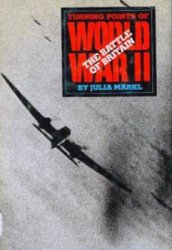Jesup's Treachery
General Jesup decided that what he considered Osceola’s duplicitous behavior required drastic action. If the Indians could not be persuaded or coerced to surrender and agree to being removed from Florida, they would have to be exterminated. Further, no traditional niceties of military conduct would be allowed to get in the way of victory. Indian allies of the United States would be permitted, if not actively encouraged, to take a no-holds-barred approach to defeating Osceola and his people.
On September 9, 1837, U. S. forces captured Philip, Micanopy’s brother-inlaw, who was one of the most important war leaders. Philip was incarcerated at Fort Marion, where he was permitted to send for his son, Coacoochee. Coacoochee arrived with another warrior, Blue Snake, bearing a white flag— the traditional, almost sacrosanct symbol of peace, and hitherto a virtual guarantee that those so appearing would be permitted to arrive, talk, and leave in
Peace. Not so with Jesup: When the two men arrived to meet with him, the general had them arrested.
Jesup then laid his trap for Osceola. On October 20, Osceola sent a trusted black fighter, Juan Caballo (also known as John Horse), to Brigadier General Joseph Hernandez, a militia commander at St. Augustine and an unsuccessful candidate for the U. S. Senate in 1845, to request a meeting with Jesup. Jesup told Hernandez to agree to the meeting and arrest Osceola when he arrived.
On October 21, Osceola, accompanied by Coe Hadjo, a pro-emigrationist, awaited Hernandez about eight miles south of St. Augustine. Hernandez arrived with two companies of troops (about 250 men), while Jesup remained at Fort Peyton nearby.
Hernandez easily found Osceola’s camp with a white flag flying over it. This flag had been made from the white cloth that Jesup had earlier supplied to the Indians so that they could surrender without harm. Osceola asked Coe Hadjo to speak on his behalf. After some discussion, Hernandez motioned for the troops to come closer. Perhaps not surprised by the stratagem, Osceola offered no resistance. He, Coe Hadjo, 71 warriors, 6 women, and 4 blacks were taken prisoner and marched to Fort Marion at St. Augustine.
The method whereby Jesup had taken Osceola prisoner would subject him for the rest of his life to severe criticism, both within Congress, where an extensive debate about his actions occurred in the spring of 1838, and beyond the halls of Congress in the press and in public discourse. The stigma of dishonor went with him to his grave and has endured permanently in accounts of the Second Seminole War. The one place where his actions did meet with almost total approbation was Florida, among the Euro-Americans who looked forward to the removal of Osceola and the other Indians.
Imprisonment
Osceola was joined later that fall at Fort Marion by several family members, including his two wives (Uichee and Ahlikchen) and two children. He remained at the fort for about 10 weeks, during which time his health declined. In December, a measles outbreak killed 15 prisoners, although Osceola apparently did not contract the disease. Conditions were unsanitary, and lice became a serious problem. Dr. Frederick Weedon, a surgeon under contract to the army who also was a brother-in-law of Wiley Thompson, was at Fort Marion and would continue to treat Osceola during the final months of his life.
While at Fort Marion, Osceola turned down a chance to escape with Coacoochee and 18 others on November 29. Osceola cited his health as a reason for staying behind, but he also was awaiting his family members and worried about their fate if he escaped.
Osceola and the others held at Fort Marion (including Micanopy, who had surrendered at Fort Mellon on December 3, and Philip) were transported aboard the steamer S. S. Poinsett to Fort Moultrie on Sullivan’s Island in the harbor of Charleston, South Carolina. They arrived at the fort on New Year’s
Day 1838. Accompanying the Indians were Dr. Weedon and Captain Pitcairn Morrison, the officer in charge of Seminole emigration. Many of those incarcerated, including Osceola’s wives and children, eventually were shipped west. Osceola, however, would soon die at Fort Moultrie.
Osceola's Final Days
Osceola was treated reasonably well at Fort Moultrie, where his accommodations were large enough to include his wives and children. He was permitted the freedom to walk about the fort, he had a pallet on which to sleep beside a fire, and he retained at least some of his weapons.
Considered a major celebrity, Osceola was able to receive visitors, including two of the leading painters of his day, George Catlin and Robert John Curtis. Osceola agreed to pose for both, donning his best clothes, including a turban with plumes and a variety of ornaments. He sat in the middle of a room, moving about as he wished, while the two painters worked at opposite sides of him.
Curtis painted one portrait of Osceola, a moving view that captures the pensive humanity of the leader so close to the end of his days. Catlin took longer with his work, finishing several portraits of the Indians held at Fort Moultrie, including two of Osceola. His full-length painting, The Black Drink, depicts Osceola facing left, with his eyes slightly uplifted and steadying a rifle by its barrel with its stock resting on the ground. The Creek’s facial expression in Catlin’s bust-length Osceola, the Black Drink, a Warrior of Great Distinction, is more thoughtful, perhaps melancholy, and less inspiring than the full-length painting. The full-length Catlin painting is now in the American Museum of Natural History; his other portrait resides in the Smithsonian American Art Museum. The Charleston Museum houses Curtis’ portrait.
Death and Burial
Osceola grew more ill on January 26, a day after Catlin completed his paintings. Dr. Weedon blamed his growing illness on fatigue occasioned by posing for the portraits. Weedon summoned another physician, Benjamin Beard Strobel, of the Medical School College of South Carolina, but Osceola’s condition quickly worsened.
During the morning of January 30, Osceola, although unable to talk, managed to put on his best clothes, which his wives brought him. He painted half of his face red, placed his knife under his belt, put his turban with its three plumes on his head, and rested. He then managed to arise and shake hands with family members, Dr. Weedon—who left behind an account of these final actions—and others who were in the room. After being lowered again onto his bed, Osceola withdrew his knife, laid it across his chest, and, armed and wearing the paint of a warrior, awaited death, which came that evening shortly after 6:00 P. M.
Osceola's Missing Rifle
Osceola had many of his most prized personal possessions about him when he died at Fort Moultrie on January 30, 1838. They included a rifle immortalized by George Catlin in his full-length portrait of the hero of the Second Seminole War. Unfortunately, the rifle, along with many other valuable items, disappeared shortly after Osceola's death.
Dr. Frederick Weedon took many of the artifacts with him, among them Osceola's gun, which was soon sent on to a Mr. J. W. Jackson in Albany, New York. Jackson was apparently a friend of Weedon's. The gun, based on Catlin's painting, was a flintlock with a metal butt plate and a metal patch box. It corresponds roughly to an earlier description of a silver-mounted rifle that Osceola possessed and which he may have received from Wiley Thompson when the agent was trying to woo Osceola to accept removal to Indian Territory.
Patricia Riles Wickman, in her book Osceola's Legacy, describes an attempt by a Utah dealer in the 1980s to sell a carbine that he claimed to be Osceola's rifle. It turned out not to be the genuine article. Osceola's gun remains undiscovered, perhaps long ago encrusted with rust and discarded. Of course, it may also be standing silently in a corner of some dusty attic awaiting discovery. Should the gun ever come to light, it will take its place among the most valued of artifacts associated with the great Indian leaders who devoted themselves to trying to keep alive their people's culture, even their very existence.
Osceola received a military funeral and was buried near the entrance to Fort Moultrie. Prior to the burial, Dr. Weedon, assisted by Dr. Strobel, removed Osceola’s head (without the knowledge or consent of Osceola’s family). Weedon took the head to St. Augustine and kept it within preservatives in his drug store, seemingly for scientific purposes. This indefensible indignity shocked many people when it came to light, although that apparently did not deter others, including curiosity seekers, from going to view it. The head was transferred a few years later to Dr. Valentine Mott of the Medical College of the City of New York. The current whereabouts of Osceola’s head are unknown, although it may have been consumed in a fire at the Medical College that occurred in the 1860s.
The Aftermath
The Second Seminole War did not immediately end with the death of its most famous combatant. Fighting continued, although the Indians held with Osceola at Fort Moultrie were sent westward near the end of February. General Jesup asked to be relieved of his command, and his wish was granted in April 1838. Brigadier General Zachary Taylor, a future President of the United States, succeeded him as commander of the Florida forces. As the war dragged on, Taylor was followed by several other commanders. Finally, starving and
Emaciated, and threatened with the execution of several of their leaders who were being held prisoner, many of the resisters surrendered in 1841. Additional holdouts were pursued throughout the following year, with the war officially pronounced over on August 14, 1842.
At the supposed conclusion of the Second Seminole War, some 300 Creek and Seminole Indians remained in Florida. Most withdrew into the Everglades. According to John Mahon, more than 3,800 Indians were shipped westward by the conclusion of 1843. Those remaining in Florida gradually declined in number, dropping to fewer than 100 by the 1850s.10 By the 1880s, they began to interact again with the descendants of Europe, and their population slowly began to increase—each man, woman, and child still in Florida a living testament to Osceola’s determined refusal to give up.




 World History
World History









